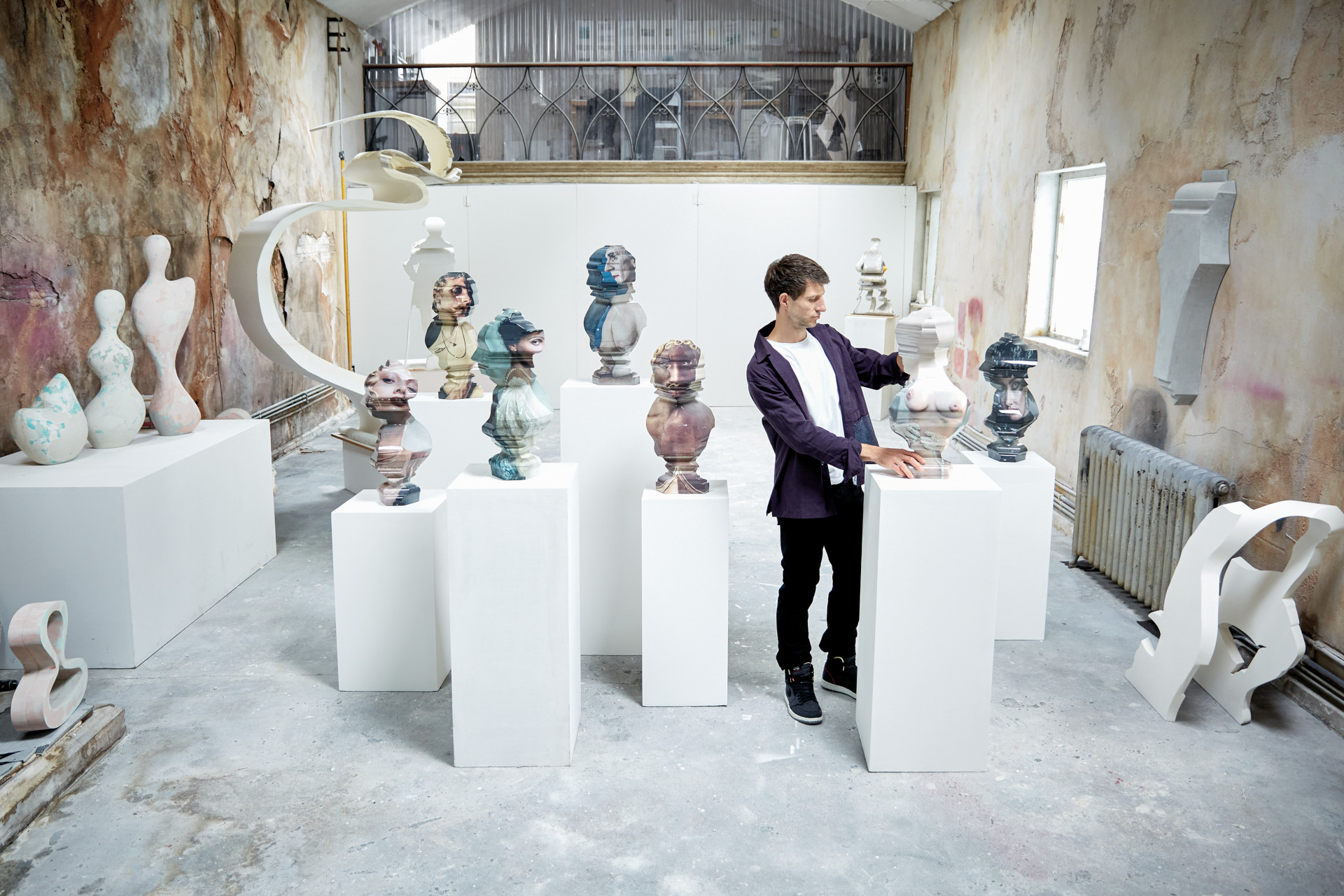Artist’s Studio: Nick Hornby
By
4 years ago
Defining identity, perspective, and subjectivity

Caiti Grove talks crises and collaborations with Nick Hornby, the structuralist sculptor known for combining art history and digital technology.
The Best Art Exhibitions in London
Artist’s Studio: Nick Hornby
‘When I was 20 I had a crisis,’ Nick Hornby tells me, sitting on the fire escape to his Notting Hill studio. ‘I was taking portraits in Morocco. But I found myself wrestling with the politics of representation. What does it really mean for me – a white, middle-class gay man – to photograph a person of colour?’ This question became the core driver of his practice: how does our own identity determine how we perceive things?
After he graduated from the Slade School of Fine Art, his first two major commissions were to collaborate with young people at Tate Britain and then at the Southbank Centre. In the latter, he collaborated with six young people, hybridising one drawing from each participant into a single 14 foot sculpture. The work revealed each of their designs, depending on where the viewer was standing. This led him to ask: what if the same exercise was repeated using iconic works from the canon of art history?
Fast-forward ten years to Hornby’s first public commission, Twofold. From one angle it embodies a Kandinsky abstract, from another Michelangelo’s David. Five metres tall, it stands like a curling steel ribbon outside a new university science department in the town of Harlow, Essex. It was commissioned as the town’s 100th sculpture, joining the likes of Rodin, Henry Moore and Barbara Hepworth.

Nick Hornby breaking boundaries in his Notting Hill studio
So why all the collaboration and citation of other works? ‘I’m obsessed with structuralism,’ he explains. ‘The idea that the author is not the final purveyor of truth. It fits my own crisis of the personal subjective.’ Hornby decided a constructive way to approach subjectivity in sculpture was by exploring both his and others’ identities through collaboration.
Opening back in November 2020, Hornby’s solo exhibition at MOSTYN gallery in Wales, Zygotes and Confessions, included his first autobiographical series. In his Notting Hill studio – ‘a little idyll akin to a 17th-century chapel,’ as Hornby describes it – the works stood on plinths under a double-height ceiling. They were three-foot high globules of viscous-looking resin, lacquered with images of men in Speedos and women’s swimming costumes. The exhibition explored gender, sexuality, identity and body politics, taking on sculptural traditions in art history, whether through busts, 19th-century ornaments or 20th-century abstraction.
‘From my first show at the Southbank until lockdown this year,’ he says, ‘my work was quite academic, austere, calculated, theoretical.’ I disagree – I think it is timeless and elegant, and poses questions about art and history, authorship and legacy. His new work feels unmistakably now: rooted in a curious and non-binary moment of history, little represented in modern art. ‘It’s been quite a weird year and I just started to feel that now was the time to do something different, to explore ideas I hadn’t quite dared to before,’ Hornby explains. And hooray for that.
See more of Nick Hornby’s work at nickhornby.com
Artist’s Studio: Philipp Humm / Artist’s Studio: Kevin Francis Gray



